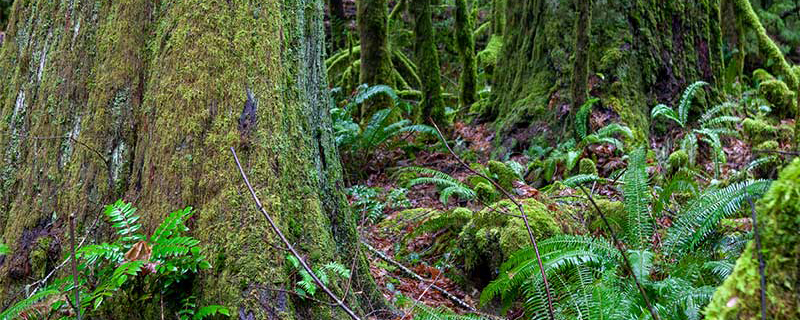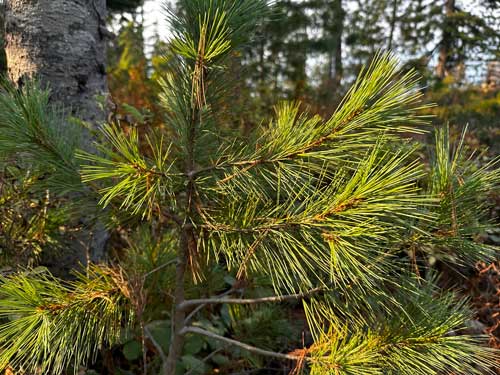BC Timber Sales - Forest stewardship
 A commitment to sustainable forest management is one of the three overarching principles that guide BCTS practices across British Columbia.
A commitment to sustainable forest management is one of the three overarching principles that guide BCTS practices across British Columbia.
On this page
- What is sustainable forest management?
- Commitment to forest stewardship
- Forest management planning
- Biodiversity
- Health and resilience
- Old growth
What is sustainable forest management?
Sustainable forest management includes maintaining and enhancing the long-term health of forest ecosystems, while providing environmental, economic, social and cultural opportunities. For BCTS, this means maintaining a balance between a healthy forest environment and economic sustainability.
Commitment to forest stewardship and sustainability
Our commitment to forest stewardship and sustainability is reflected in the work we do related to forest management and planning, biodiversity, health and resilience, certification, harvesting, reforestation, climate change and a carbon strategy.

Forest management planning
Successful forest stewardship that supports the protection and maintenance of multiple resources requires extensive planning.
The BCTS planning process begins with the creation of a Forest Stewardship Plan (FSP). The FSP outlines how BCTS, its contractors and licensees will undertake harvesting and other related activities within a specific area while managing and maintaining important resources like water, wildlife, fish, biodiversity, cultural heritage sites, recreation, soils and the visual quality of the landscape.
After the FSP is approved by the Ministry of Forests, BCTS staff and external consultants and specialists, who may include biologists, geoscientists, and hydrologists, complete inventories, surveys and assessments to identify harvest areas, site-specific values and management strategies. The next step is creating the operating plans. These plans show proposed harvest blocks, roads and other activities that will take place over a three to five year period.
Sustainable harvest rates for the public forests where BCTS operates are determined by the Chief Forester through Timber Supply Reviews, a rigorous and science-based evaluation supported by inventories of timber and other resource values.
Biodiversity
BCTS’ forest management activities both follow and complement the Government of B.C.’s biodiversity commitments to conserve and sustain wildlife populations and protect species and ecosystems at risk.
As an example, recovery strategies and implementation plans for southern mountain caribou, marbled murrelet and coastal northern goshawk involve the conservation of large areas of habitat primarily located in mature and older forests.
BCTS activities follow legal requirements around biodiversity including:
- Planning harvest activities to protect old-growth management areas, wildlife habitat areas and ungulate winter ranges
- Maintaining fish habitat and stream water quality
- Leaving wildlife tree retention areas in or adjacent to every cutblock to provide habitat or refuge areas for a variety of species
- Programs to identify and manage plant and animal species at risk, ecological communities at risk and other species that require special management for social, cultural or economic reasons
Health and resilience

After more than a decade of focus on the salvage and regeneration of interior forests killed by the mountain pine beetle epidemic, BCTS has shifted to the salvage and reforestation of areas affected by wildfire, the spruce beetle epidemic and other emerging forest health issues. BCTS continues to adapt its harvesting and reforestation strategies to increase ecosystem resilience to pest and disease impacts that may arise from a changing climate.
More details can be found in BCTS’ Climate Change Action Plan (PDF, 167KB)
Old growth
BC Timber Sales is phasing in expanded measures to voluntarily protect exceptionally large and ecologically important trees, referred to as "legacy trees", through updated Best Management Practices (BMP) guidance. Introduced in 2017 for Coastal Operations, this guidance has been updated and broadened to apply around the province. These changes support the B.C. government’s commitment to old growth stewardship and the long-term health and resilience of British Columbia’s forests. The new Legacy Tree BMP (PDF 281KB) includes additional species for both the Coast and Interior and updated language that clarifies the approach and its relationship to other planning initiatives.
BCTS also follows the requirements of the Special Tree Regulation that creates legal requirements for the protection of large trees throughout B.C. that meet specific criteria. This regulation also requires a 1-hectare buffer to be maintained around the specified tree.
The B.C. government recently undertook an independent review of old growth management and has committed to implementing its recommendations. BCTS is actively involved in implementation, including the deferral of certain at-risk old growth ecosystems.
BCTS supports the implementation of the recommendations in the Old Growth Strategic Review, including Recommendation 12, to create a silviculture innovation program aimed at developing harvesting alternatives to clearcutting that maintain old forest values. By implementing partial harvest methods that maintain old forest values and protect ecosystem health and biodiversity, BCTS can continue achieving sound and sustainable forest management while supporting a strong economy and resilient communities.
